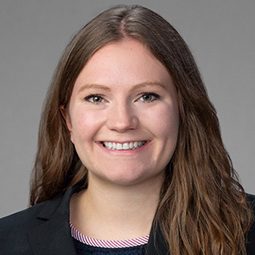Empty Space—Navigating the Void of Pore Space Regulation in Texas
The Inflation Reduction Act (IRA) has spurred investment in carbon capture and sequestration (CCS), a key tool for decarbonization, by significantly increasing the tax credit for permanently sequestering carbon dioxide.
However, many states lack comprehensive laws necessary for CCS projects to attract investment. That includes Texas, a global energy capital that boasts high storage potential. Regulatory uncertainty has long been a barrier to the energy transition, making the resolution of legal issues a critical path item.
Ownership: The Threshold Question
Several states have taken steps to answer the most basic legal question impacting CCS: who owns the pore space in which carbon is injected? The vast majority of states that have decided this issue—by statute or case law—follow the so-called “American Rule,” under which the surface owner owns the pore space. Courts have reasoned that the pore space should be treated as any other non-mineral asset that categorically belongs to the surface owner.
COMMENTARY

But this fundamental question remains unanswered in Texas. Myers-Woodward v. Underground Services Markham, LLC, involving cavern space created as a result of salt mining, has the potential of settling this question. The Texas Court of Appeals held that the “mineral interest owner owns the minerals but not the subsurface.” The case is currently pending before the Supreme Court of Texas.
As Myers-Woodward progressed through the courts, the Texas legislature sought to settle the issue. Two identical companion bills, SB 2107 and HB 4484, would have defined the pore space as owned by the surface owner “[u]nless expressly modified, reserved, or altered by a deed, conveyance, lease, or contract.” Neither bill received a final vote before the end of the legislative session. While many commentators expect that Texas courts will ultimately follow the majority American Rule, the question is best answered by the legislature in order to provide the regulatory certainty needed for investment in CCS in Texas to flourish.
Currently, some carbon sequesterers are seeking permission from both the surface and mineral estate owner—and even seeking to acquire both estates—to mitigate risk. The increased cost of managing these legal uncertainties is weighing against robust investment in CCS.
Further Issues
The ownership question, however, is only the beginning. Can the pore space be separately conveyed? How will conflicts between pore space and mineral owners be solved? What happens if there are multiple pore space owners? How will liability be managed? These questions must also be answered for CCS investment to thrive.

Severing the Pore Space: Pore space owners may be interested in severing and selling off their interest in the pore space, just as a surface owner can do with the mineral estate. Some states, including Wyoming, expressly permit severance and provide requirements for the transferring instrument.
Others, including North Dakota and West Virginia, expressly preclude this possibility. While those statutes leave open leasing opportunities, stakeholders are urging the adoption of statutes that allow for complete severance in order to provide flexibility to facilitate CCS projects. The text of the proposed Texas statute is unclear on this point, though it implies that the pore space may be severed. Clarity via a statute modeled after Wyoming’s would be most helpful for Texas.
Priority: The general common law rule is that the mineral estate is dominant over the surface estate, allowing the mineral estate owner to use the surface estate as reasonably necessary to develop minerals. The statutes of many states explicitly affirm this concept, as does the proposed Texas legislation. This will allow parties to rely on well-developed common law in solving and anticipating conflicts between the pore space and mineral owners. Parties should also carefully address this interplay when working through permitting processes.
Pooling: To facilitate enhanced recovery of minerals, many states allow for pooling mineral interests to include non-consenting owners in development. Likewise, states with robust pore space statutes have addressed pooling, with varying requirements for the percent of pore space owners that must consent in order for the area to be pooled. Given the large space that will be required for many CCS projects, pooling will be necessary to facilitate development.
Liability: Many states have adopted legislation that provides liability relief for parties that store carbon dioxide. These programs generally operate by allowing operators to transfer title and liability to the state after a fixed amount of time. Liabilities are paid by the state from fees collected from operators. The draft bill in Texas would have allowed the state to assume liability after 10 years, while other states, such as Wyoming, have longer periods of 20 or more years.
Conclusion
Texas is poised to become one of the most significant jurisdictions in the CCS industry. Regulatory structures will go hand in hand with government incentives in spurring investment in CCS in Texas and beyond. Stakeholders are rightly advocating for legislative action in the pore space arena with an eye to unlocking at-the-ready investment dollars.
—Omar Samji is a partner in Weil’s Private Equity practice and is based in Houston, Texas. Sarah George is an associate in Weil’s Private Equity practice and is also based in Houston.